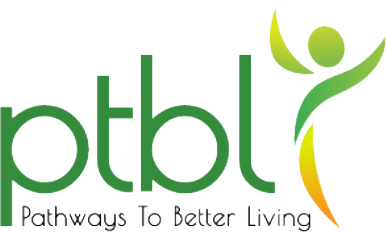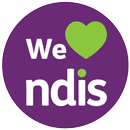Pathways to Better Living Pty Ltd – Business Continuity Policy
Introduction
As a support provider, we recognise it is our obligation to ensure the continuity of business during and following a major disruption as far as practicable. Disruptions may occur in the form of a disaster, emergency or disruptive event. These disruptions may significantly impact buildings, equipment, products or the ability to deliver services and therefore require appropriate foresight to reduce the impact on our business operation and to the participants we support.
Our business continuity plan is based on the Prevention, Preparedness, Response and Recovery framework.
Each stage has a primary objective:
- Prevention – identifying and analysing risk factors
- Preparedness – assessing the impact of adverse risks through a business impact analysis
- Response – a set of comprehensive steps to mitigate and respond to adverse risks
- Recovery – a set of comprehensive steps that plan for return to regular service
Applies to all representatives including key management personnel, directors, full time workers, part time workers, casual workers, contractors and volunteers
| Term | Description |
| Business continuity planning | A process that helps develop a plan document to manage the risks to a business, ensuring that it can operate to the extent required in the event of a crisis/disaster |
| Business continuity plan | A document containing all the information required to ensure that our business is able to resume critical service provision in the event of a crisis/disaster |
| Business impact analysis | The process of gathering information to determine basic recovery requirements for our key business activities such as service provision in the event of a crisis/disaster |
| Key business activities | Activities deemed essential to maintain a business |
| Recovery time objective | The time from which we declare a crisis/disaster to the time the critical business functions must be fully operational in order to avoid serious financial loss, or cessation of business and service provision |
| Resources | The means that support delivery of our services. This may be money, physical assets, equipment (such as PPE) and most notably people |
| Risk control | Reducing an identified risk if the posed risk may not be eliminated entirely |
| Risk management | The process of identifying and analysing risks, and then deciding on the appropriate course of action in order to minimise these risks whist still delivering essential services |
Prevention
The first stage of ensuring business continuity is the development of a risk management plan.
A risk management plan assesses and mitigates potentially disruptive events to our business and to participants. As we support people with disability that may have reduced capacity to act in potentially disruptive situations, it is most vital we assess risks with recognition that our primary aim is to always protect participants and workers’ wellbeing.
When we conduct a risk management plan we will:
- Identify hazards and risk factors that have the potential to cause harm. such as:
- bushfires, floods, cyclones etc.
- pandemics
- worker strikes
- life-saving equipment malfunctions.
- Analyse the risk associated with that hazard, such as:
- building damage
- infection or health deterioration of participants and workers
- reduced staffing
- resource cut-offs such as power or water.
- Evaluate the risk associated with that hazard and prioritise it according to its significance on the impact on our organisation, participant or workers:
- health and safety
- finances
- operability
- compliance
- access to vital resources including power, water, PPE etc.
- reputation.
- Determine appropriate ways to eliminate the hazard or control the risk when the hazard cannot be eliminated (risk control). Strategies may include:
- insurance
- secondary disaster locations
- emergency participant plans
- mandatory training to appropriately skill your workforce
- back-up resources or power sites.
We recognise that the execution of any plan is contingent on appropriately trained and skilled workers. Therefore, wherever possible we will seek to train and skill our workers in the required emergency response activities they will need to perform. In the event of a complete worker shortage we will seek to collaborate with community partners, retired workers and government organisations to support our participants and their needs.
Preparedness
Identifying and assessing risks and potential ways to mitigate such concerns ensures that we are able to develop comprehensive strategies to minimise the impact on our participants, workers and organisation. These sets of strategies used to respond, and recover will be informed by our business impact analysis.
Our business impact analysis seeks to identify:
- the key business activities
- the specific impact to our participants, workers and/or organisation in the event this key business activity was not performed or operated at a reduced performance
- how long our business will be able to survive without performing or reduced performance of this key activity.
Response
In order to respond to disruptions in a timely and comprehensive manner we will develop response plans based upon our findings in the business impact analysis and risk management plan. Each potential disruption identified will have the following elements documented in an Incident response plan a(n):
- immediate response checklist
- evacuation or infection control procedures
- emergency kits
- roles and responsibilities for key management personnel and workers
- key contact information details and,
- event log of decisions and actions taken during the immediate response.
Immediate response checklist should be series of questions workers or key management personnel can answer in order to activate the required response.
Evacuation, lockdown or infection control procedures detail how any individual on the premises should proceed in the event of one of these critical incidents. As we support people with disabilities it is our responsibility to ensure for each identified risk, we have an appropriate procedure in place to evacuate, lockdown or control infection for each vulnerable participant.
Emergency kits are easily manoeuvrable and carriable kits or offsite securely stored information that contain essential documents and items that are required in operation of our services. This may include:
- emergency contact details of workers and participants and their next of kin / support networks
- emergency response plans and any other NDIS related plans for vulnerable participants
- participant medication lists and first aid equipment
- personal protection equipment
- basic toolkits and light sources
- backups of business information etc.
These items should be regularly inventoried and updated.
Roles and responsibilities refer to who and what is required of workers and key management personnel during these disruptive events. This section of our business continuity plan allows us to assign roles to activate emergency initiatives and ensure adequately skilled workers are in place to navigate the situation. In general, all roles will have assigned a leader and secondary alternative in the event the leader is unable to perform their responsibilities.
Key contact information details are a comprehensive list of contact details of both internal (worker and key management personnel) and external (participants, participants emergency contacts, emergency services, community partners etc.).
Event log is a log of events and the decisions or responses taking during the critical incident. This may provide an important basis for insurance, business operation claims or for the NDIS Quality and Safeguards Commission, after the fact.
Recovery
The recovery phase of our business continuity plan focuses on returning to operating our key business activities as soon as possible after the critical response. This is fundamental within our operation as we support participants who require specific levels of care to maintain quality of life.
Our recovery process will focus on:
- developing strategies to recover all business activities
- detailing resources required to recover all business activities
- detailing key management personnel or worker responsibility to return to business operations.
In developing strategies for recovery, we will adopt a ‘worst case scenario’ framework which will be scalable to the actual impact of the event.
Reporting requirements
As a registered NDIS service provider, it is a condition of our registration to notify the NDIS Quality and Safeguards Commissioner (the Commissioner) of any changes and events that affect our ability to provide the supports and service we are registered to provide. In most circumstances, the activation of the business continuity plan would constitute the grounds for informing the Commissioner via the NDIS Commission Portal. This responsibility therefore will be allocated in our response to a disruptive event.
- Public liability insurance
- Professional indemnity insurance
- Workers compensation insurance (when employing workers)
Insurer requirements
- Must be an insurer recognised by the Australian Prudential Regulation Authority, or regulated by a state or territory Auditor-General.



